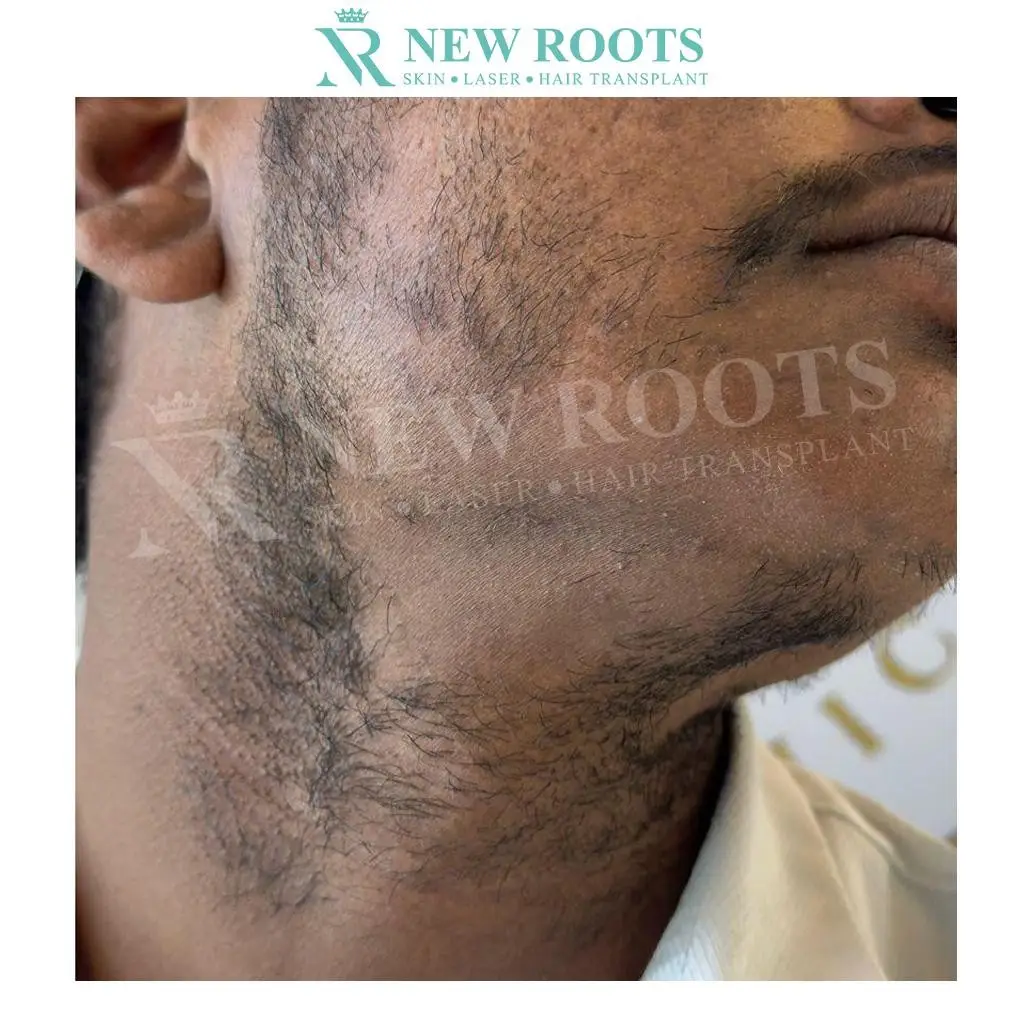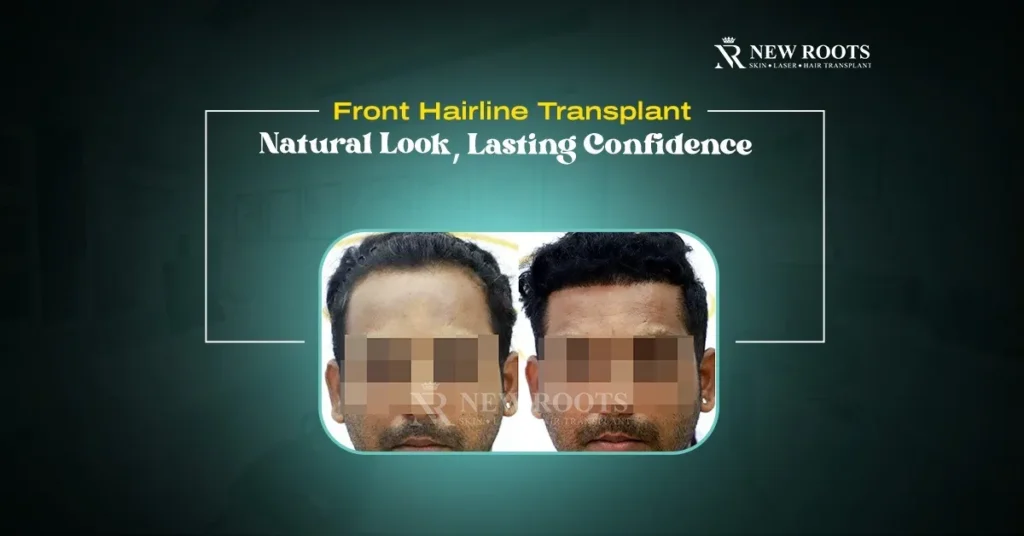Introduction: Front Hairline Transplant
Over the last few years, there has been a growing interest in Hairline transplants that can assist sufferers who have lost their hair due to various reasons, such as androgenetic alopecia, male pattern baldness, and female pattern baldness.
In this text, you’ll be taken through all the components of front hairline transplant, from the benefits, tactics, and expectations.
Table of Contents
The Front Hairline Transplant: An Appreciation
The frontal hairline is possibly one of the most conspicuous areas of the human body because it surrounds the head and greatly influences the level of self-esteem of an individual.
A low, balding hairline is an important factor in a youthful head shape, while a high hairline results in an inferiority complex due to hair recession.
Therefore, getting a thinner hair area treated appropriately by a hair transplant clinic is crucial.
Hair Loss and Its Causes: An Overview
Baldness is a diagnosable problem that affects both young and adult patients of different sexes, and this proves the complexity of its treatment. In light of this, there is a need to diagnose the type of hair loss to enable the right management to be undertaken.
Types of Hair Loss

Androgenetic Alopecia:
The most frequent type of hair loss.
Male pattern baldness and female pattern hair loss.
Defined by a hereditary course of slow balding at the temporal or crown areas with a wide center.
Resulting from fluctuations in dihydrotestosterone hormones.

Alopecia Areata:
An autoimmune disease that causes rapid, sparse hair loss.
It can occur in almost any person of any age and gender.
May present in small, round, and circular patches, but these lesions can progress to alopecia totalis.
The hair grows back automatically, but the disease is relapsing again.

Hair Thinning:
Statistically connected to processes such as aging and hormonal balance shifts.
Hair is gradually weakened so that the body sheds hair uniformly throughout the face and head.
Some causes of this kind of hair loss include childbirth, pregnancy, and post-menopause.
Often observable by a broader area of the part or decreased hairline density.

Scalp Infections:
Some of these infections include tinea capitis, which results in hair loss in children.
An ailment that results from a fungal attack on the hair roots.
The symptoms are redness, scaliness, and occasionally pustules at the site of hair growth on the scalp.
Needs antifungal therapy in order not to lead to irreversible hair loss.
Omant signs may include changes in texture and dyschromia of the skin, inflammation, scaling, lesions, or nodules on any part of the body, particularly on the scalp.
Such types of hair loss clearly illustrate the versatility of hair-related conditions, which in turn necessitate specific strategies for identification and management.
Recognizing these differences is essential for managing hair loss effectively.
Front Hairline Transplant: What is it?
A front hair transplant entails the surgical moving of hair follicles from a region of the head where hair density is healthy to an area of baldness along the front hairline.
It is aimed at the regrowth of hair on any part of the scalp in rich and natural-looking, appeasing hair.
Advantages of The Front Hairline Transplant
Undergoing a front hairline transplant offers numerous benefits, including:
Permanent Solution: The transplanted hair evolves in the same manner as normal hair and can be trimmed as well as styled.
Self-Confidence: Patients are reputed to develop high self-esteem shortly after they undergo the procedure.
Natural Results: This is true with FUE, where the patient benefits from a natural hairline that matches the patient’s face.
Different vital components related to the FUE hair transplant surgical operation consist of some essential steps concerning the success rate of hair transplant surgical procedures and the natural look of hair.

Education for the FUE Hair Transplant Surgical Procedure
The preoperative level of Follicular Unit Extraction hair transplant operation is especially essential for how the final end result will appear.
Freewheeling is normally characterized by this phase, which often starts with the initial consultation; several aspects are considered at this stage.
Consultation
The consultative part includes the examination of the patient’s general state, past medical history, as well as details about hair loss. This step includes:
Medical Evaluation: The surgeon inquires about any pre-existing medical issues or conditions, medications, or allergies that may affect the surgery. Patients are supposed to provide relevant information regarding their health.
Hair Loss Assessment: An examination is also done to get deeper into the causes of hair loss so as to establish the pattern of the problem.
Such an assessment may have an allocation of the donor site, which is the back and sides of the scalp, for an adequate number of hair follicles that can be transplanted.
Expectation Management: This makes the surgeon put the patient in a real-world social contextual frame to describe the probable outcome of the transplant.
It has been discovered that an open discussion achieves this because it resembles reality more, and thus, the patient is happy with the results.
Designing the Hairline
One of the pivotal aspects of the FUE preparation process is designing the hairline, which involves several key considerations:
Facial Proportions: The surgeon has to find out the size of this forehead, the position of the brow line, and even the shape of the face.
This assessment means that a hairline is formed seamlessly, and this gives an enhanced appearance to the patient.
Natural Look: In designing the hairline, the major goal is to design what looks like a natural hairline by replicating the hair growth pattern.
Some general ways that surgeons use include avoiding making the edges of the hairline completely straight to avoid creating what is referred to as a ‘hard-line’.
Patient Input: In the design of the hairline, the patient is expected to give suggestions on how he or she would want the hairline to be; the shape and position of the hairline.
This makes the process collaborative in that the final design created will be one that will be approved by the patients and will also look natural.
Extraction of Hair Follicles
In this process, the hairs along with a small area of skin are removed by using special instruments from the back of the head, normally sited as the donor area. It, however, reduces trauma and enhances the process of healing in the body.
Classification of Grafts and Their Storage
The grafted hair is then meticulously examined and selected based on its quality, and it is preserved in a solution that maintains its shelf life, ready for implantation.

We Follow the Direct Hair Implantation Process.
When transplanting hair directly, follicles are accurately placed in areas of baldness with the correct density to achieve a normal angle similar to normal hair growth.
How to Create a Hairline that Looks Like It Wasn’t Transplanted
Any front hairline transplant aims to create a natural one that is almost impossible to tell has been done.
Flawlessness and the Part It Plays in Looking Natural
There is always a little irregularity when it comes to natural hairlines. Amalgamizing asymmetry is more natural, as not every human creature has a straight hairline.
Perspective on Hair Transplants—Long Term
One needs to think long-term about hair transplant surgeries once the process of undergoing the transplant is considered.
This will have an impact not only on the outcome of the hair restoration but also on the appearance once the person is older.
Future Aging Considerations
Every follicle on the human body is not spared the reality of aging, and this is also true for hair.
This can persist for some time after the transplant, especially for clients who suffer from conditions where the hair loss keeps progressing, such as androgenetic alopecia. Right here are a few vital elements to remember:
Hair boom Cycle: Hair is a body tissue that grows, rests, and sheds in keeping with a sure cycle.
The nice hair transplant uses hair follicles from areas that don’t have issues with hair loss; however, as the person ages, the result can also begin to thin.
Expectations on how these factors are likely to influence the total head hair density in the next few years should be planned for.
Maintaining an Appropriate Hairline: Any hairline today should be good-looking and should not change with the advancement in the age of the person.
The presence of hair above the forehead; if the hairline shifts or thins, it alters the natural balance of the face.
As a result, surgeons’ main goal is to create hairlines that not only may be aesthetically pleasing right after the surgery but also would be suitable as one grows older.
Assessing Future Hair Loss Patterns: The patient should reveal a family history of hair loss during the consultation with the doctor.
Knowledge of the hair-shedding cycles that affected relatives may assist the patient and the surgeon in setting down the ideal hairline design and the procedure to be undertaken.
Adjustments Over Time: Sometimes, clients might require follow-up treatments at some point in the future to complement the outcomes achieved.
Surgeons worried that hair transplant patients might suffer hair loss again, and might prescribe other operations or treatments.
Proportions and Modification of the Face
The correlation between hairline and face structure is essential when a person wants to achieve the right balance and genetic looks.
When planning a hair transplant, the positioning and shape of the hairline must carefully align with individual facial proportions, offering several key considerations:
Importance of Facial Proportions
Facial Symmetry: In human perception of beauty, most people correlate beauty with symmetry and balance.
The consideration of the hairline should have the purpose of giving a good look by providing a good balance in facial beauty.
The hairline can be raised, lowered, or shaped according to the individual’s face and its features.
Facial Shapes and Types: Hairline designs vary depending on the shape of the face or the shape one has, such as oval, square, round, or heart-shaped, to ensure proportions are maintained. For instance:
Oval Faces: Usually benefit from a little lower hairline and a gentle climb.
Square Faces: This may require a slim face with sharp angles, especially the jawline and angular hairline.
Round Faces: A long hairline that suggests some rise at the temples produces a slimming effect much more than a flat hairline.
Conclusion
In precis, Front Hairline Transplant is a promising solution for people experiencing hair loss. It is a secure method accomplished through professional specialists geared toward restoring confidence and growing a youthful, natural appearance.
For those thinking about a natural hairline transplant, knowing the process, blessings, and long-term implications is critical for making an informed selection.
Q&A ASK
A front hairline transplant is a surgical procedure that transfers hair follicles from regions of density to the frontal hairline, ordinarily for the treatment of thinning and receding hairlines, especially as a result of male/female pattern baldness.
The time for a front hairline transplant usually requires between four and eight hours when undertaken, depending on the number of hairs that are going to be moved and the method used, either FUE or FUT.
Indeed, the transplants that target the front hairline are meant to be permanent solutions. The transplanted hair follicles are sourced from the scalp areas, which have strong DHT receptors; hence, the grafted hair will continue to grow for the normal lifespan of each hair.
Usually, a patient may experience some level of discomfort or mild inflammation within the first few days after a front hairline transplant. People are advised to have scabs on the transplanted area, meaning they will drop off after 10–14 days on the onset of healing.
Yes, when done by an experienced surgeon, a front hairline transplant can give a natural appearance. They take into account the proportions of the face, the direction of hair growth, and the possible natural hairline to pull off a good look.




